For many years, this website used the popular WordPress theme Genesis by StudioPress. It remains one of my favourite WordPress frameworks, but in early 2020 I wanted to try something different and opted for the lightweight WordPress design GeneratePress.
I can’t speak highly enough about GeneratePress. It’s one of the easiest WordPress themes to optimise and features many useful administration options, a website builder and an advanced hook system. It also comes packaged with many professional pre-made designs, all of which were created using the WordPress block editor, Elementor or Beaver Builder.

Bored with the standard blog-style layout I was using, I purchased Elementor Pro at the end of June 2021 to help me improve the look of my home page and other key pages of this website. It was an easy decision to make as the GeneratePress WordPress theme has fantastic support for the Elementor page builder.
In just a few days, I was able to transform the look of my home page and significantly improve the look of my webmaster resources area. Elementor worked in harmony with GeneratePress, though I soon switched to Elementor’s canvas theme Hello as I was no longer using any mahorGeneratePress features (Check out my full review of Hello on WPMarmalade!).
All in all, I was delighted with the results I got from Elementor, but around three weeks later, I completely removed Elementor from my website and switched back to GeneratePress.
In this article, I will explain why I switched back to using GeneratePress and the WordPress block editor and share three reasons why I love Elementor and three reasons I don’t.
Reason to Use Elementor #1: User Experience
WordPress page builders are not as clumsy and awkward as they used to be and Elementor provides website owners with one of the best design experiences.
Elementor’s main control panel is displayed at the side of the page. The panel shows all content elements and a host of useful configuration settings. It works well as you can view content in the main canvas area at all times and it can be hidden if you want zero distractions.
When you choose to modify your content using a page builder such as Divi, a pop-up settings box will appear. In contrast, when you modify content in Elementor, its settings will load in the main panel so that no settings are displayed over your content.
I appreciate that user experience can be difficult to quantify, though I like Elementor’s approach as it’s quick to use and has fewer distractions than alternative solutions.
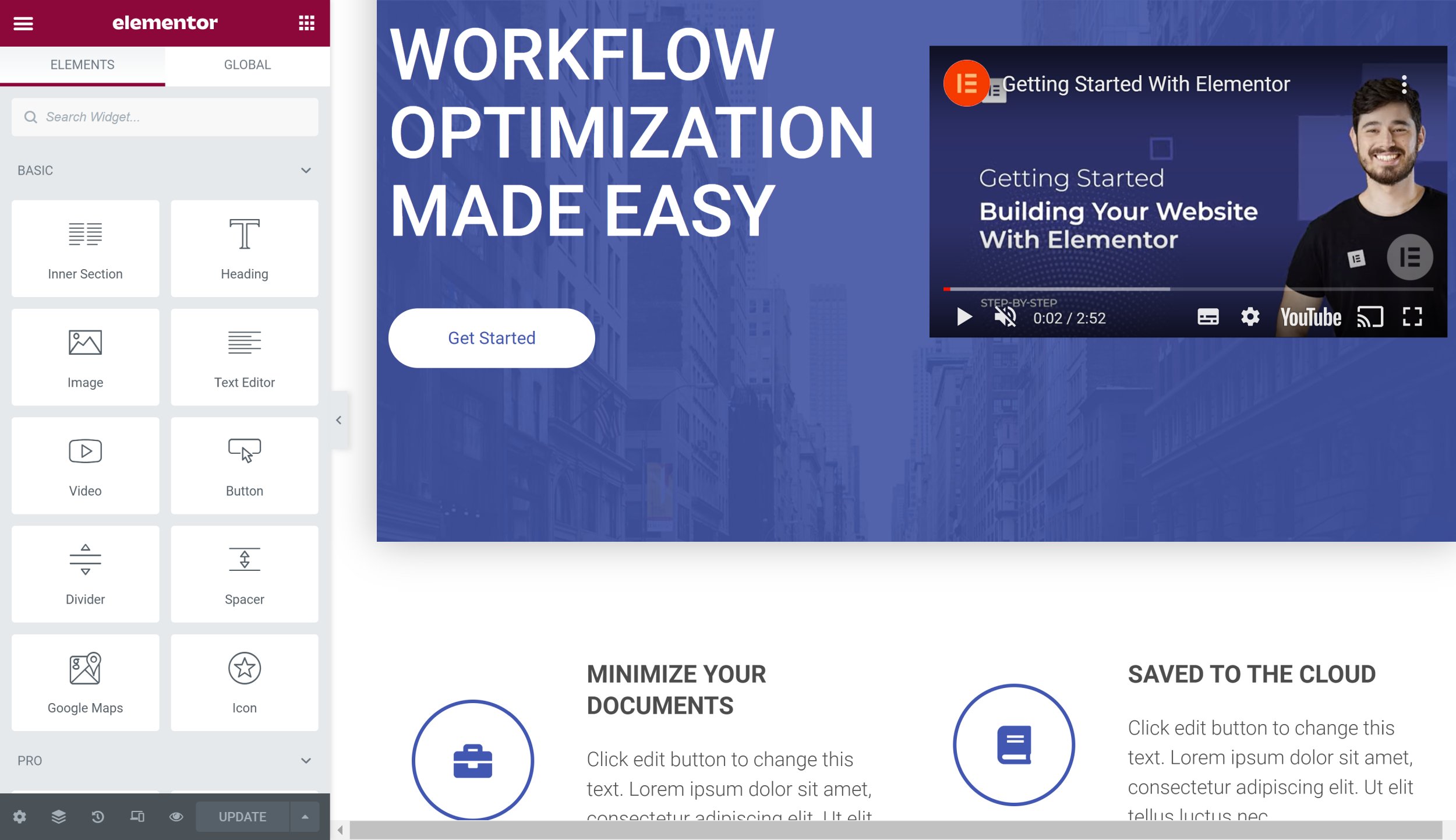
Reason to Use Elementor #2: Creative Design Features
Elementor simplifies the process of creating beautiful content and professional website designs. As someone with no design imagination, this has always been one of my favourite features of the plugin.
The free version of Elementor has over 40 content elements and Elementor Pro adds over 50 more. Each version of Elementor also comes with a great selection of pre-made content blocks and page templates and any modifications to designs can be saved and reused later through Elementor’s fantastic template system. Elementor Pro users can also use the Elementor theme builder to create website headers, navigation menus, footers and more.
If that isn’t enough for you, you’ll find dozens of plugins in the official WordPress plugin directory that expand Elementor further. They can be used to add additional design features, content elements and pre-made designs.
Check out my article “The Top Eight Best Elementor Addons/Extensions” on WPMarmalade to read more about the plugin extensions that are available for Elementor.
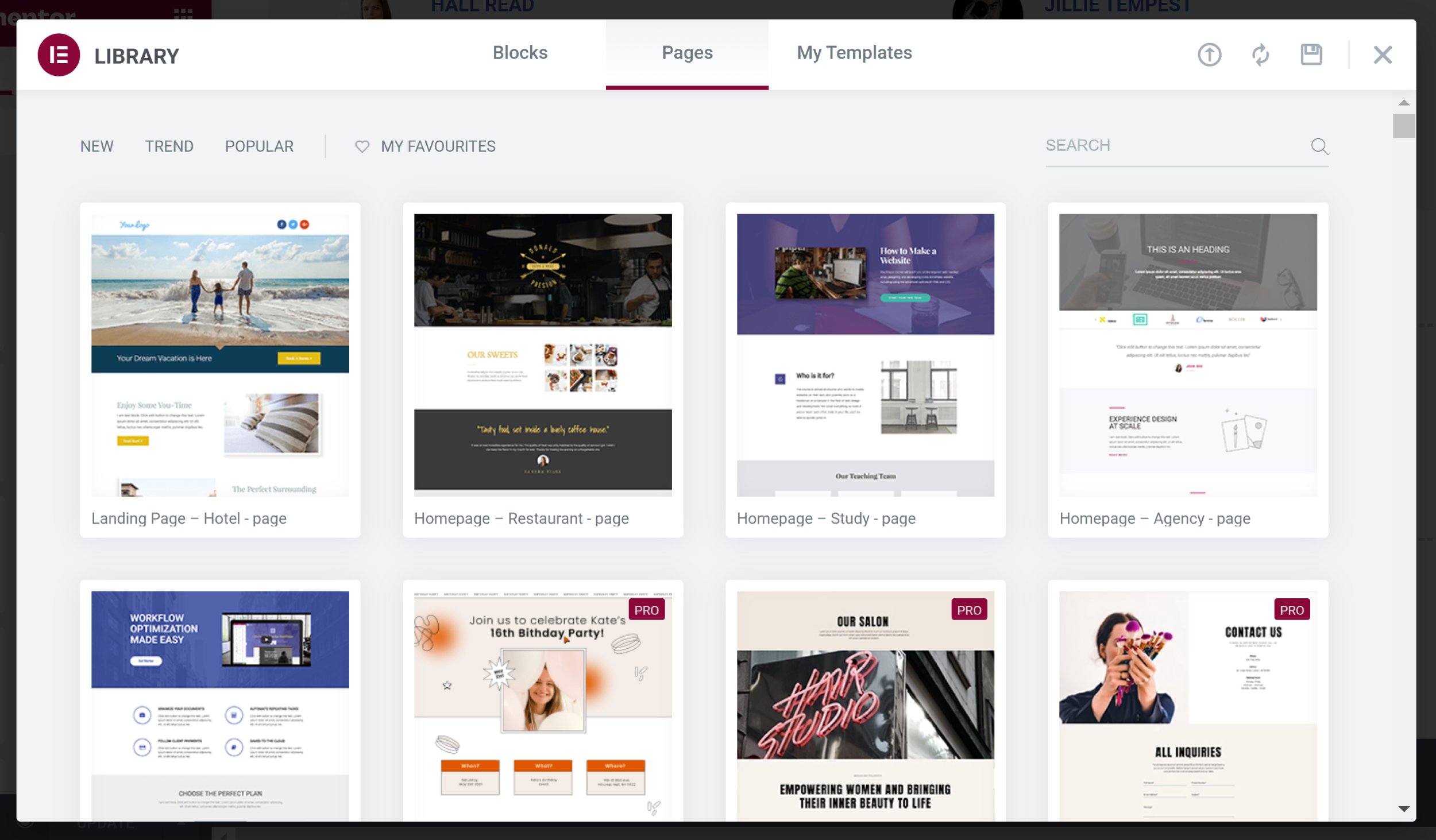
Reason to Use Elementor #3: Pricing Model
Many WordPress page builders are released under a freemium model, though the developers of Elementor have been particularly generous with what is included in the core version of their plugin. It’s a fantastic page building solution in its own right and does not restrict you in the way other solutions do.
The free version of Elementor could benefit from more templates, though you can easily add additional content elements and pre-made designs using third-party plugins.
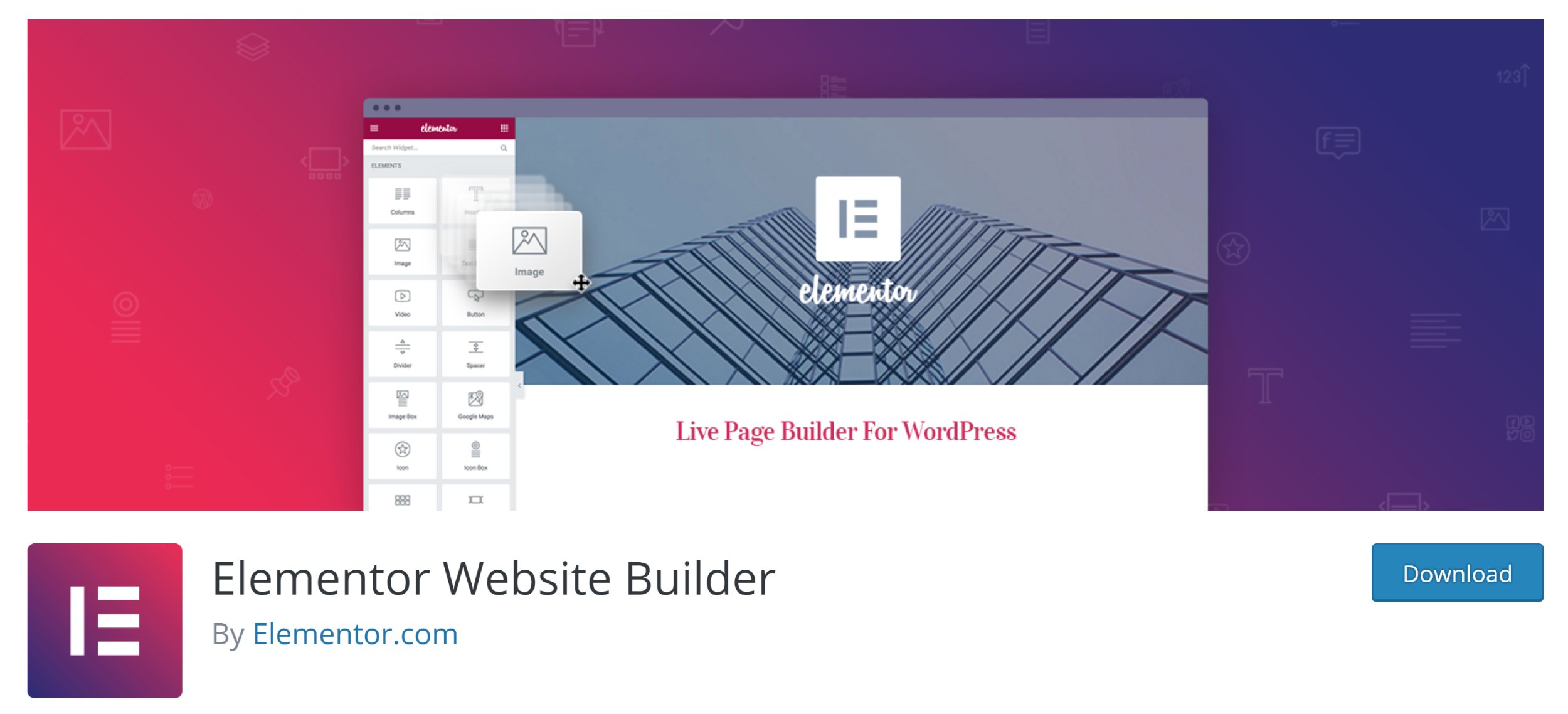
The core version of Elementor will be enough for many website owners, but at only $49 per year, there’s more than enough on the table to encourage you to upgrade to Elementor Pro. Upgrading unlocks Elementor’s useful theme builder, 50 additional content elements, hundreds of additional pre-made page templates and more.
Overall, pricing is a great selling point of Elementor. The free version is solid and $49 per year is good value for Elementor Pro. Multi-license pro plans are also available at a fair price.
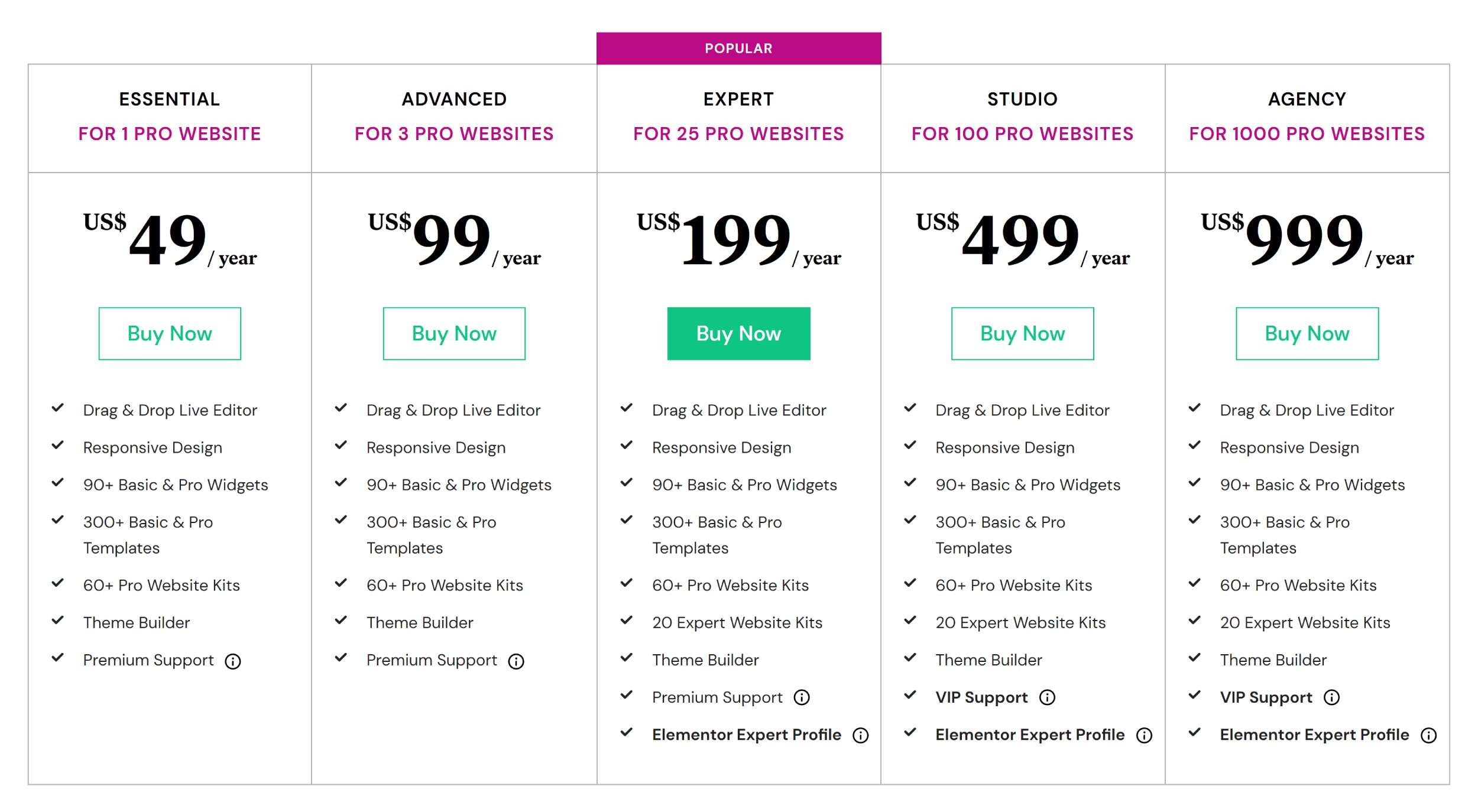
An Important Factor to Consider: Performance
Page builders are notorious for slowing down websites and for a long time, performance was a major downside to using Elementor. Performance is still a concern, though the developers of Elementor are moving things in the right direction by introducing experimental options to optimise Dom output, improve asset loading and improve CSS loading.
Using the caching plugin WP Fastest Cache and optimisation plugins such as Autoptimize and Async JavaScript, I was able to reduce page-loading times considerably and achieve a respectable website performance score on both Google PageSpeed Insights and GTmetrix. My website wasn’t as fast as it was previously using GeneratePress and the WordPress block editor, but it wasn’t a million miles away. Be aware, however, that some performance plugins will cause major compatibility issues with Elementor (more on this later).
To improve the speed of an Elementor website, I recommend reading their official guide “How To Speed up WordPress: In-Depth Guide“. I also encourage you to read Tom Dupuis’ article “How To Speed Up A Slow Elementor Website“. It has everything you need to speed up an Elementor-powered website.
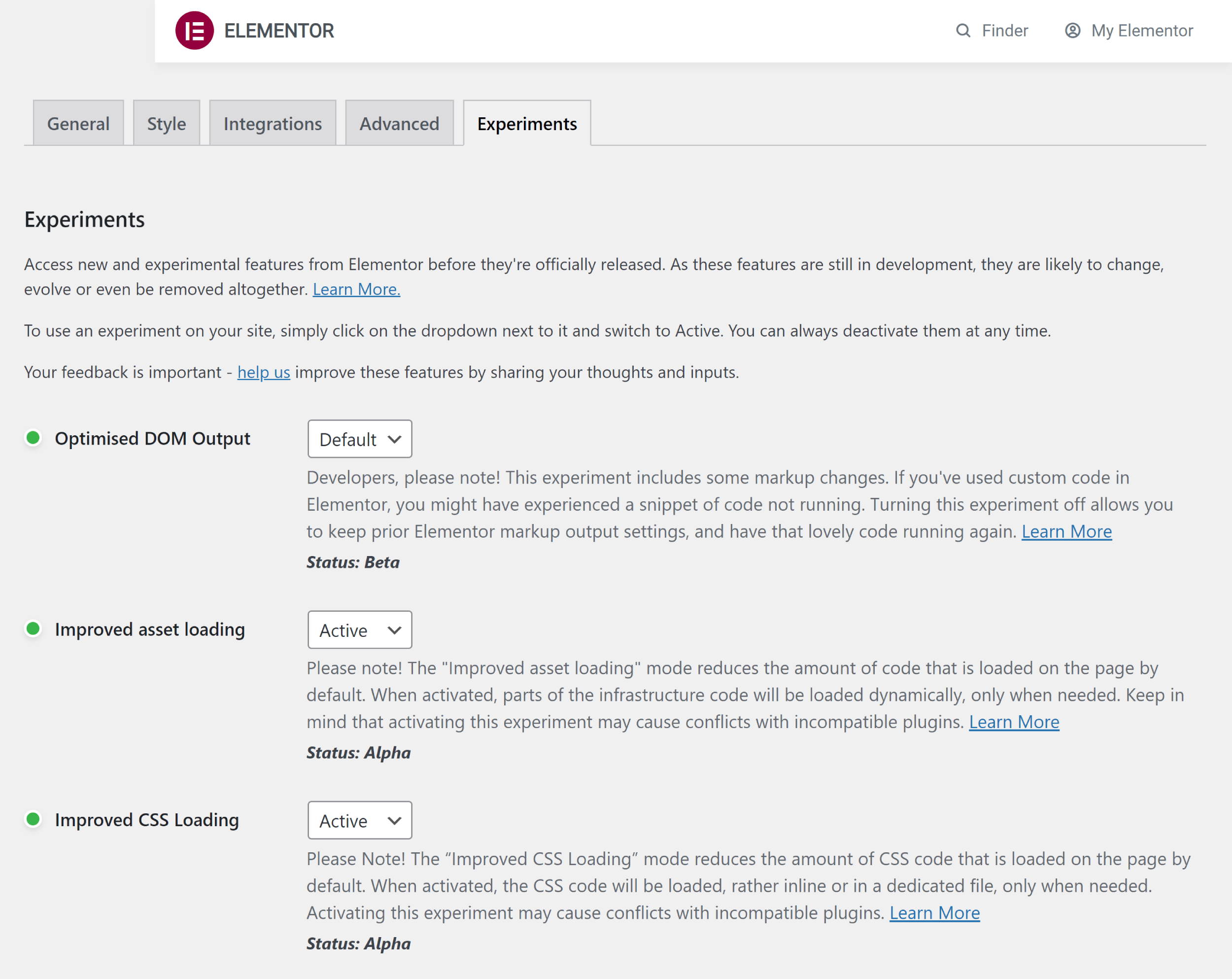
Why You Shouldn’t Use Elementor #1: Poor Integration With the WordPress Editor
Many page builders use a shortcode system to integrate designs into WordPress. The downside to this setup is that when you deactivate the page builder, your blog posts and pages still include thousands of unused shortcodes. Elementor avoids this issue by separating its user interface from the WordPress block editor. This removes the risk of leftover shortcodes but raises other issues which are potentially more problematic.
If you choose to load the Elementor builder for an existing post or page, the content will be added to your layout using Elementor’s Text Editor content element. The problem is that if you decide to go back to the WordPress editor, the layout you created in Elementor will be lost. This means that if you deactivate Elementor, all of the content and layouts you created using its page builder will be lost. On this blog, I discovered that there is no easy way to migrate content back to the WordPress editor, which meant that I had to manually copy articles back over and then re-create tables and other designs.
The WordPress plugin Elementor Blocks for Gutenberg can be used to insert saved blocks and templates into the WordPress block editor, though the WordPress editor and Elementor Builder do not work in harmony.
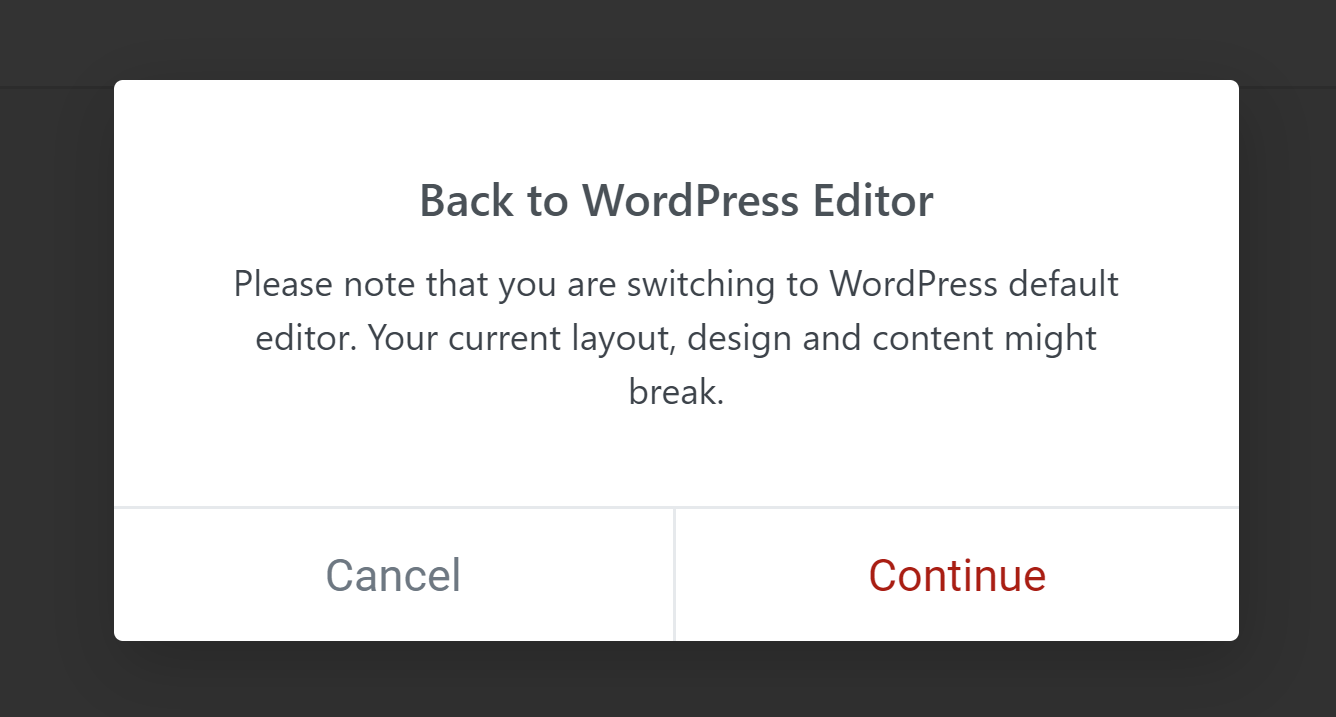
Why You Shouldn’t Use Elementor #2: Compatibility
From the day Elementor was released, the plugin has had compatibility issues with WordPress themes and plugins. Popular WordPress plugins are supported well, but you may find that other activated plugins on your website will break Elementor and prevent the user interface from loading correctly.
On this website, the YouTube WordPress plugin I use to display my latest YouTube videos caused Elementor to break so I was forced to deactivate it. WordPress performance plugins will frequently stop the Elementor Builder from working correctly too. I guess it’s no surprise that performance solutions that defer or async Javascript can cause problems with the user interface, though I found this frustrating as those additional performance plugins were only installed as Elementor was slowing my website down.
My biggest problem with compatibility issues is that the not loading message that Elementor displays does not advise you which plugin is causing the conflict. So you need to do your own detective work, deactivating and reactivating each plugin on your website until you find out which one is causing issues.

Why You Shouldn’t Use Elementor #3: Support
Quality support can be the difference between a good service and a bad service. Unfortunately, I’ve found Elementor’s support to be…well, terrible.
Here’s what happened.
After purchasing Elementor Pro, I opened a support ticket about a query I had. No one ever replied.
A few days later, I raised concerns about Elementor’s theme builder. The theme builder was the main reason I upgraded to Elementor Pro. It’s a great feature, but it’s also something that I found frustrating as display conditions are extremely limited. So limited that I was unable to use the theme builder on this website.
I raised a support ticket about the issue, but no one responded. I responded to the ticket myself over the following seven days, requesting help on the subject, but I still did not receive a response. Eventually, I posted a long detailed explanation of the issue on Elementor’s Support Forum in a thread entitled “How Can I Address the Limitations of the Theme Builder’s Display Conditions?“.
Their support team responded to my forum thread after I complained on Twitter, advising me to make a feature request as Elementor could not do what I was asking.
Many thanks to both Anne-Mieke and Don for responding. I’ve waited around a week for support to get back to me and asked them multiple times to respond. To date, they haven’t replied. Which, I have to admit, is incredibly discouraging as an Elementor Pro user. My opinion of Elementor has always been high, but the whole support system clearly needs reviewed.
Venting my frustration in the Elementor Support Forum.
Elementor’s theme builder just wasn’t able to do what I wanted on this website. I tried many workarounds to get it working, but I eventually threw in the towel and accepted that I’d have to stop using Elementor.
As I noted previously, I believe Elementor Pro offers good value at $49, however, after receiving no response from the support team for over a week, I requested a refund. In theory, this should not have been a problem as Elementor offer a 30-day money-back guarantee on all purchases. Unfortunately, I was only able to receive a refund after several emails and publicly complaining on Twitter that Elementor wasn’t processing my refund.
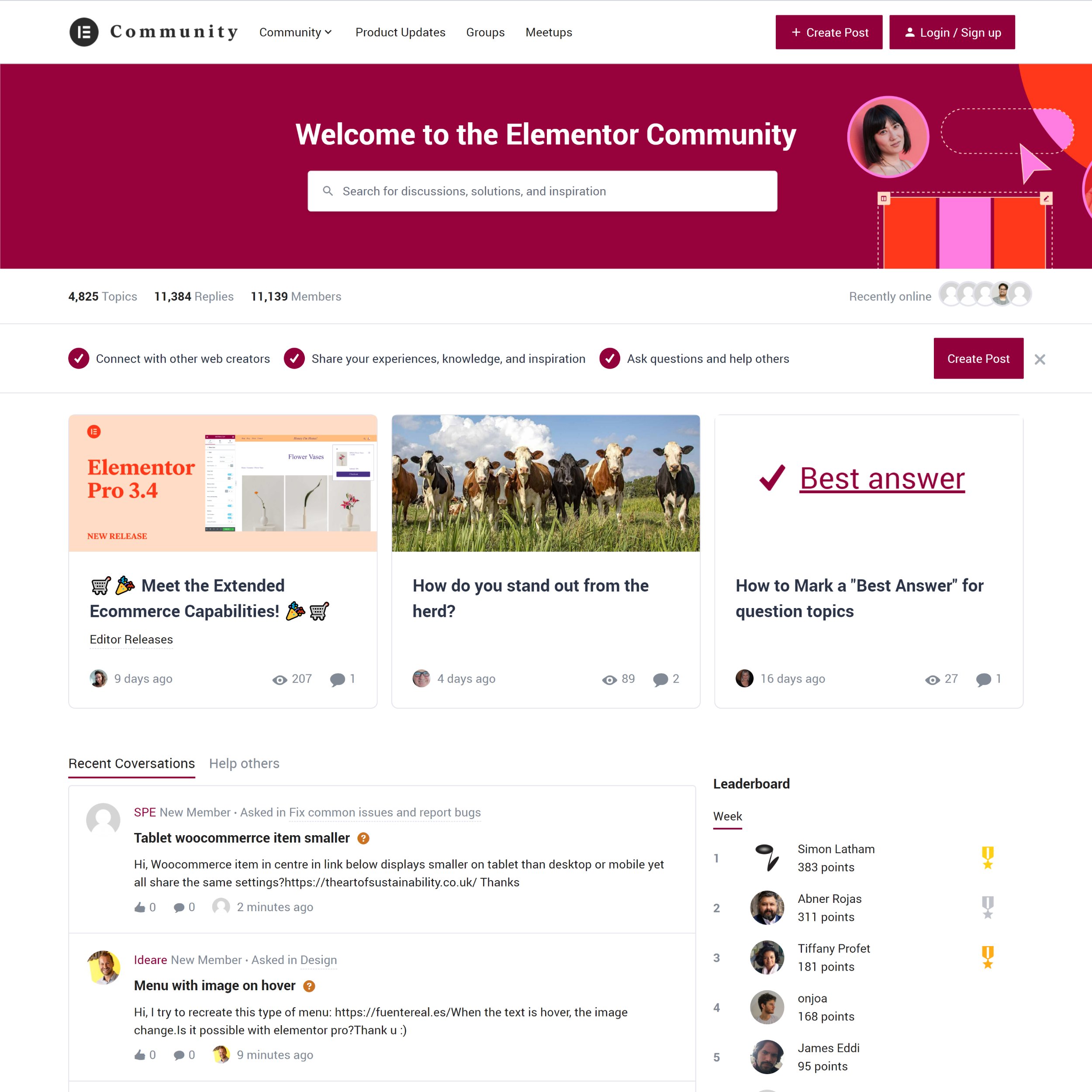
Final Thoughts
Elementor is rightfully ranked as one of the best WordPress page builders on the market alongside alternative solutions such as Divi, Beaver Builder and Oxygen Builder.
The page builder is easy to use, comes packaged with many pre-made designs and can be expanded easily through third-party plugin extensions. I’ve always found it easy to create beautiful designs with Elementor and I love the fact the free version is not too limited.
Like any page builder, Elementor does have some flaws. I’ve experienced more plugin compatibility issues with Elementor than other page building solutions and there is no easy way to migrate layouts back to the WordPress editor. It’s also disappointing that a product as good as Elementor does not invest more into providing customers with better support.
Despite these issues, Elementor is still a product I can recommend. Just be sure to test it thoroughly before you use it on a live website.
Thanks for reading.
Kevin

